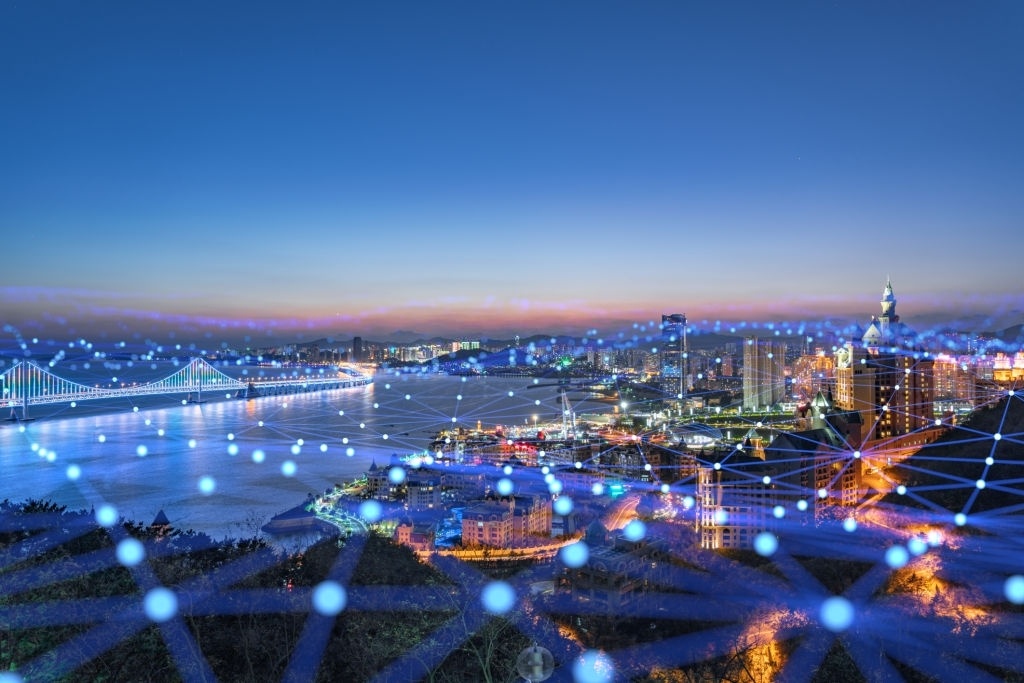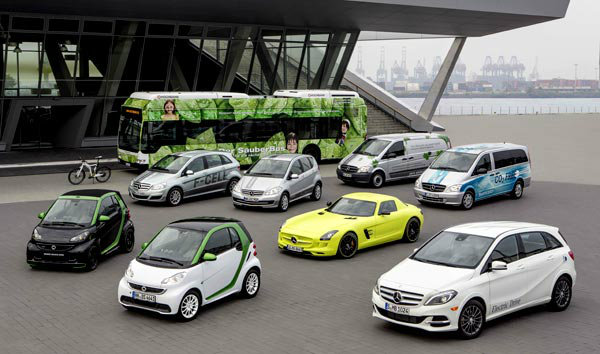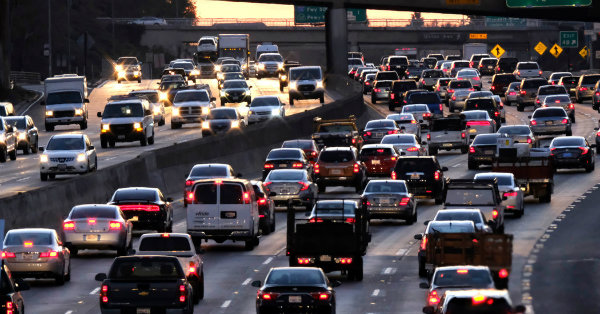Life In 2050 – Part 4: A Look At The Future Of Transportation And Travel
Welcome Back To The “Living In 2050” Series Of Articles. In Previous Parts Of This Series, We Talked About How Climate Change And Environmental Problems Affect The Future Of Warfare, The Global Economic, And Everyday Life.
Life In 2050, we want to talk about how people will go from point A to point B in the middle of the current century, whether it is about inner-city travel, intercity travel, or travel from one continent to another.
And In addition to all the topics we have covered so far in Life 2050 articles, the transportation industry is another industry expected to undergo a major revolution in the coming decades.
In many ways, this revolution has already begun, thanks to self-driving cars, the widespread use of electric vehicles, the growth of renewable energy, and the advent of commercial spaceflight.
Between now and 2050, these technologies and trends will accelerate and lead to the development of new transportation infrastructure very different from what we know today.
The following factors will have the greatest impact on the process of this revolution:
- Urban population growth and clean energy use
- Electric vehicle infrastructure
- Hyperloops and high-speed trains
- Highways and intelligent transit systems
- Point-to-point flights below Earth orbit
Old ways, new life

Obviously, the future infrastructure will be based on the foundation of the current transportation networks. These include urban centers with automated traffic control systems, public transportation networks alongside pre-existing road networks, highways and lines connecting major urban centers, and airports that fly between countries and continents.
The current infrastructure problem is the reliance on fossil fuels and the fact that it has taken on an outdated and relatively worn form.
According to an analysis by the American Association of Road and Transportation Builders, about 231,000 bridges in the United States (more than a third of all bridges in the United States) need to be repaired or replaced by 2020.
Similarly, the Global Economy Forum published a report in 2017 in which it ranked 137 countries based on their economic competition.
According to the report, developed countries such as France, Germany, Italy, Sweden, Spain, the United States, and the United Kingdom all suffer from dilapidated infrastructure. In particular, the condition of roads and bridges has become a major concern in these countries.
On the other hand, the growing problem of climate change complicates the situation. Instead of simply repairing aging infrastructure, developed countries should upgrade all of their transportation networks with a view to sustainability. As has been said for a long time, the mother needs invention.
Public health concerns

In addition to the increasing demand for food, water, and necessities (such as electricity) that will come with transportation, we must also expect an increase in air pollution.
According to a 2012 report by the Organization for Economic Co-operation and Development (OECD) entitled “Environmental Outlook 2050”, emissions of greenhouse gases and various particles will increase significantly by 2050.
This means that the number of premature deaths due to air pollution may double to 3.6 million deaths annually (especially in China and India).
These numbers become even more frightening when we know that, as a result, younger generations will experience higher mortality rates.
To summarize, by 2050, urban pollution is set to become the leading cause of death from the environment, contributing even more than pandemics, polluted water, and lack of access to health and medical equipment.
Urban transport must therefore be addressed with a glance at public health while at the same time continuing the global effort to tackle climate change.
Dense cities

城市 城市
The nature of urban transportation is set to change completely, and with the changes that have taken place like cities themselves.
Between 2021 and 2050, the urban population will continue to grow, growing faster and more than the marginalized population.
In this way, we will see the formation of a two-pronged challenge:
As more people live in cities, we will see an increase in demand for food, housing, education, and basic services.
The expansion of cities will mean that we will have access to arable land and less green space for growing food, and there is no need to mention the double pressure on freshwater resources.
But on the other hand, cities are basically hubs for initiative and development, which means that the larger the urban population, the more potential we have for achieving sustainable living solutions.
The World Population Outlook 2019 is expected to reach 9.74 billion by the middle of this century, according to a 2019 report by the United Nations Department of Economics and Social Relations.
This means that in less than 30 years, another two billion people will live on the planet.
Aside from the number of people, the question also arises as to where people will live in the world.
Today, about 56 percent of the world’s population lives in urban centers instead of rural areas, equivalent to about 4.4 billion people. According to the United Nations Department of Economics and Social Relations, the world’s urban population will reach 6.6 billion by 2050, or 68 percent of the world’s population.
Urban growth also means that some cities are swallowing up other cities to witness the emergence of new metropolises. According to the United Nations, in 1990, we had only 10 metropolises worldwide, and a metropolis means areas that host 10 million people or more.
There are currently 33 metropolises worldwide, with Osaka (19 million) and Tokyo (37 million) being the largest.
By 2030, the number of metropolises will reach 43, and most of them will be located in Africa, Asia, and South America. Global City Working Group estimates that by 2050 we will have over 50 metropolises, only 5 located in Western Europe or North America: New York, Mexico City, Los Angeles, Chicago, and Paris.
Although one-eighth (12.5 percent) of the world’s population lives in 33 metropolitan areas today, the vast majority of the world’s 4.4 billion urban population live in smaller cities with a population of less than 500,000.
By 2050, nearly one-fifth of the world’s 6.6 billion urban population will be living in one of the world’s 50 largest metropolises.
Movement in cities

By 2050, electric vehicles (or EVs) will reach 62 million units per year, and we will see 700 million EVs worldwide. In terms of overall sales, EVs will account for 56% of the global car market and, therefore, outperform vehicles with internal combustion engines, accounting for the remaining 44%.
Significant changes like infrastructure will accompany this transition.
By 2050, the number of charging stations will exceed the number of gas stations, and these stations will also benefit from the benefits of renewable energy and “smart grid” technology.
The US Energy Information Administration expects that by 2050, 49% of the world’s electricity will come from renewable sources, followed by natural gas (23%), coal (23%), and nuclear energy (5%)…
This allows us to build charging stations wherever the distribution arrays are located. Biofuel stations will also be found in abundance, thanks to carbon offset operations that are already underway.
These operations are supposed to increase the reliance on titanium dioxide or biomass to reduce carbon dioxide emissions into the air.
So for many communities by 2050, charging cars is simply taking them to charge stations located in the city or the suburbs. Basically, wherever a solar panel array or wind farm is located, charging stations will be found.
Alternatively, you can buy biomass produced from urban air pollution by visiting urban gas fields.
Just like what is possible today with online taxis such as Uber and Lift on smartphones, city dwellers will soon be able to apply for aerial taxis that will be moved between helicopters on buildings or small landing sites on the outskirts of cities.
It is also possible that with the proliferation of air taxis, we will see the construction of special “airports” in urban areas.
Examples and current efforts to make air taxis include the Boeing NeXT, the Vertical VA-X4, the Volocopter velocity, and the Lilium Jet. By 2050, electric air taxis will become a common feature in urban life.
From city to city

Due to the growth of cities, socio-economic changes and stratification – all of which will force large cities to upgrade infrastructure or face urban decline – will experience serious return transit.
In a report entitled “The Future of Lines in 2050”, engineers and members of the ARUP consulting group report the occurrence of several “super trends” by the middle of this century.
These trends include the potential for urban sprawl and the lack of adequate services, which have led to the growth of slums and suburbs, and the class divide between rich and poor.
“Currently, 1 billion people live in the suburbs, and most of these areas – more than 90% of them – are located next to cities in developed countries,” they said in a report. “By 2050, the marginalized population could reach 3 billion.”
The second trend is demographic change.
According to these experts, by 2050, more than 20% of the world’s population will be 60 years old or older (compared to the current figure of 11%).
In addition, 50% of the world’s population is expected to have reached the “middle class” socio-economic status, which will significantly impact urban sprawl.
Other “super-trends” include climate change and the need for services provided by more sustainable methods, smart technologies, and the emergence of new technologies.
Among the technologies expected to be available shortly, the Hyperloop is probably the best option. It has the potential to become an alternative to air travel in many areas.
In 2012, hyperloop became a hot topic, especially after SpaceX co-founder Ilan Musk shared his idea for a “fifth form of transportation” with the public.
A year later, he published an article that went into more detail about his idea, talking about low-pressure metal tubes that can reach speeds of up to 1,280 km / h with low wind resistance.
Musk also noted that he himself is too busy to start such a project, but his articles and ideas are available to the public. Since then, we have witnessed the emergence of several startups and the formation of competition to develop this technology, and Hyperloop could soon become a real solution.
Among the companies active in this field is Hyperloop Transportation Technologies in Los Angeles, the first private company active in this field and started operating in 2013.
Then came Hyperloop Technologies (or Hyperloop One), which evolved to become Virgin Hyperloop with the purchase of Richard Branson.
Virgin Hyperloop has several offices in Los Angeles, Las Vegas, and Dubai and wants to bring its technology to these areas first. On November 8, 2020, the company successfully passed its first passenger hyperloop test.
Another company is the Canadian company TransPod, committed to designing and manufacturing high-speed, tube-based transportation technology that seeks to connect major Canadian cities and connect them to American lines.
Similarly, Hardt Global Mobility, which started in the Netherlands in 2016, wants to build hyperloop corridors across the EU.
Smart driving, smart traffic

Shortly, travelers will benefit from intelligent highways, intelligent traffic control systems, and transportation networks optimized by machine learning and AI-based analysis.
Today, many cities are equipped with intelligent transportation systems, and this trend is expected to continue, with more cities becoming more efficient using “smart” technologies.
These systems rely on sensors, cameras, cellular routers, and automation systems to monitor and direct traffic to reduce congestion at one point. These systems also coordinate traffic lights, pedestrian lanes, speed limits, and fine offenders within residential areas.
When combined with self-driving cars, these highway systems will also synchronize information between vehicles to reduce accidents and provide passengers with legal security.
This eliminates the need for “speed traps” to enforce traffic laws and allows police and officials to take on more serious tasks.
Another way to control traffic could be to use underground tunnels for automated transportation. In the United States, we have Boring Company, founded by Ilan Musk, founder of SpaceX, that seeks to build a network of tunnels under major US cities used by cars and hyperloop trains.
Similar tunnel networks have been proposed for use in major cities in the United States, the European Union, and China. By 2050, all metropolises worldwide are likely to have underground tunnels used for driving, continuous transit, and automatic delivery.
Towards our line of work and beyond!

Of the many options available by 2050, suborbital spaceflight is probably the most ambitious. In addition to the hyperloop corridors that take people across the country in a matter of hours, commercial launch services that manage intercontinental flights will also disuse aircraft.
We now have three leading commercial space companies that have unveiled plans to use launch vehicles. One of these companies is SpaceX, which wants to enable point-to-point sub-orbital flights with the Starship vehicle.
In this way, the spacecraft is launched from a SpaceX facility and lands in another facility, and we can fly “anywhere in the world in 30 minutes or less”.
For many years, Richard Branson (founder and CEO of Virgin Galactic) has pursued “space tourism” through suborbital spaceflight.
This means that passengers aboard the SpaceShipTwo spacecraft will fly over our line of work – at a vibration of 100 km from Earth, where space essentially begins.
However, Branson himself says that the SpaceShipTwo fleet will be used in the future for point-to-point transportation services between major cities.
Blue Origin is also interested in expanding its operations and launching sub-orbital services and building ports worldwide, and operating flights between them.
As always, the biggest drivers of change from today until 2050 are climatic and technological in nature.
In terms of transportation, we must either upgrade or repair pre-existing infrastructure to serve more people while reducing the pressure on the environment.
The main solution to this challenge – the solution that is already being used in different parts of the world – will be the wider use of renewable energy, the development of sustainable strategies, the use of machine learning for further optimization, and out-of-frame thinking.











